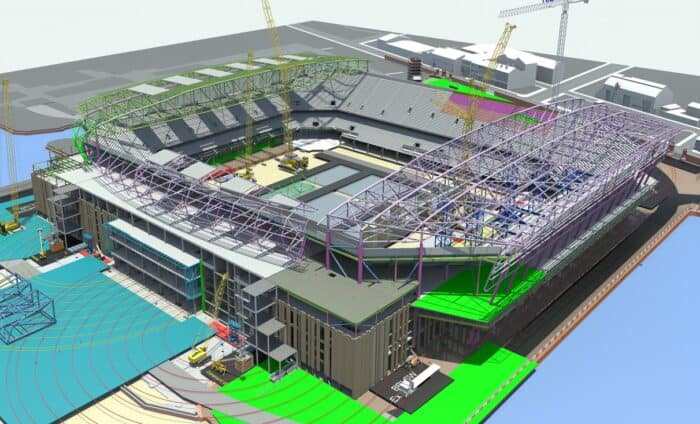Protecting The Big Easy: This Year’s Mardi Gras Showed Again How Infrastructure And Digital Twins Can Help Keep New Orleans Safe and Dry
By Tomas Kellner New Orleans is home to awe-inspiring music, food and street parties. But let’s not forget equally awe-inspiring infrastructure, which keeps the Big Easy dry. That was evident in early March when New Orleans entered “Deep Gras,” the boisterous coda to months of revelry culminating in Fat Tuesday, the end of the Mardi […]
How Bentley Infrastructure Software Helped Transform The Port of Melbourne in Australia
Repurposed from The B1M by Kathleen Moore Melbourne is Australia’s largest container port – and it’s about to get a whole lot busier. The port handles more than one-third of the shipping containers coming in and out of Australia: Over 3.2 million of them, and that figure is expected to double by 2050. There’s just […]
COP29 Dispatch: How Digital Twins Can Fortify Infrastructure Against Fierce Storms
By Chris Noon The United Nations calls climate change primarily a water crisis, bringing too much or too little water to the wrong places at the wrong time. Spain’s Valencia province is the latest example. Weeks after deadly flooding swept away bridges and buildings, tens of thousands of volunteers are still digging out their towns […]
Guangxi Positions Itself as Digital Silk Road Hub, Achieving 182% Trade Growth with ASEAN
Guangxi Zhuang Autonomous Region is stepping up efforts to solidify its position as a key hub for the Digital Silk Road, driving high-quality digital economy growth and strengthening ASEAN cooperation through the China-ASEAN Information Port. Officials announced that the region achieved an impressive 182% year-on-year trade growth with ASEAN in the first three quarters of […]
The Future of Infrastructure Engineering is Open
By Nicholas Cumins, Chief Executive Officer This post is an excerpt from the keynote delivered by Bentley CEO Nicholas Cumins to open the 2024 Year in Infrastructure conference. Infrastructure today is facing unprecedented challenges. Around the world, demand for better, more resilient infrastructure is surging—whether it is to expand energy grids, modernize transportation networks, or retrofit existing […]
Get Real: Powerful 3D Software Brings The Future of Infrastructure to Life in Just a Few Clicks
By Sean O’Neill Greg Demchak stood before an enormous LED screen in a dark hotel conference room. With a game controller and a keyboard, he moved his audience through a digital model of Barcelona. The glowing screen showed a bird’s-eye view of the Spanish city’s famed “manzanas,” the octagonal block of buildings designed by […]



 ខ្មែរ
ខ្មែរ









